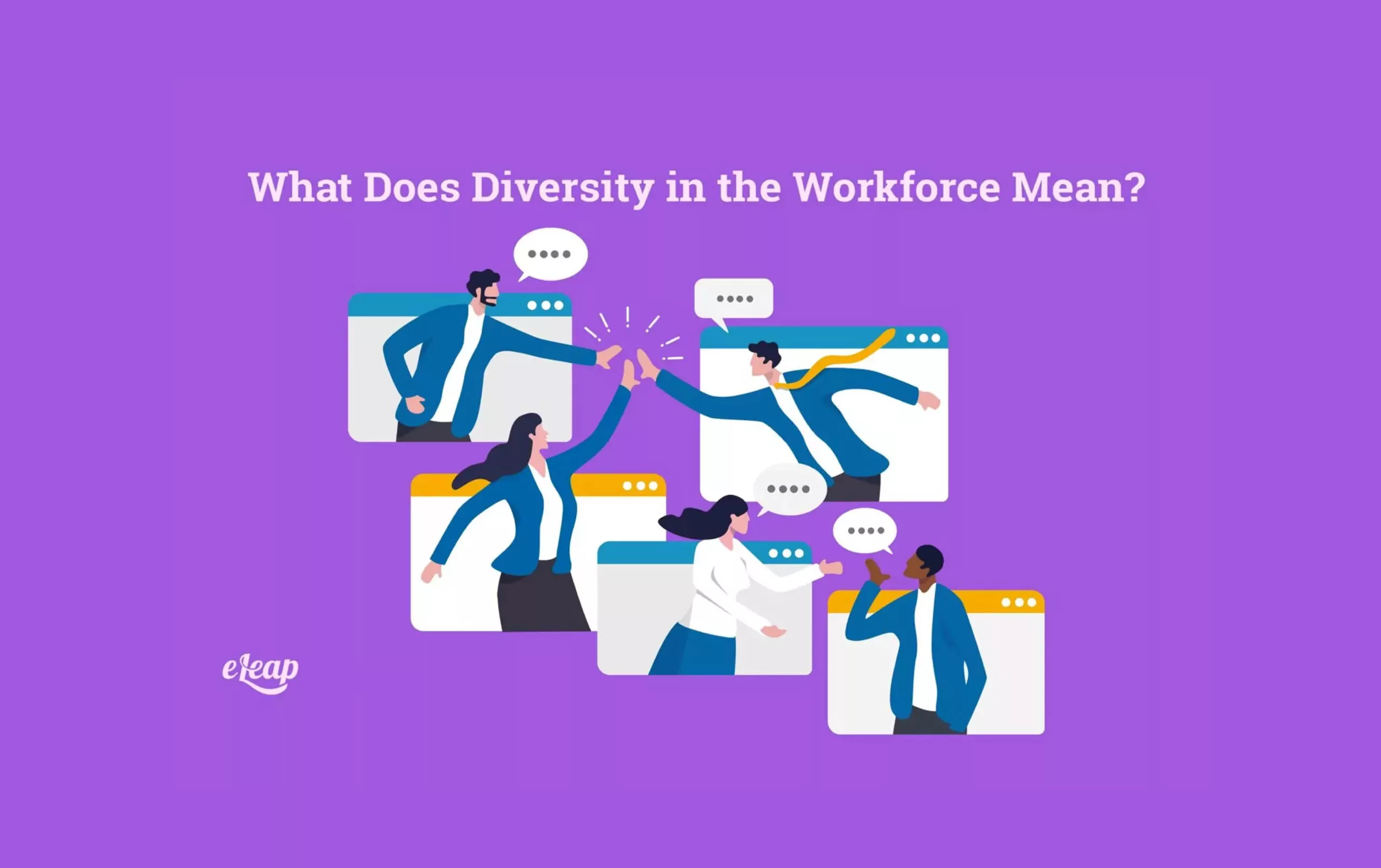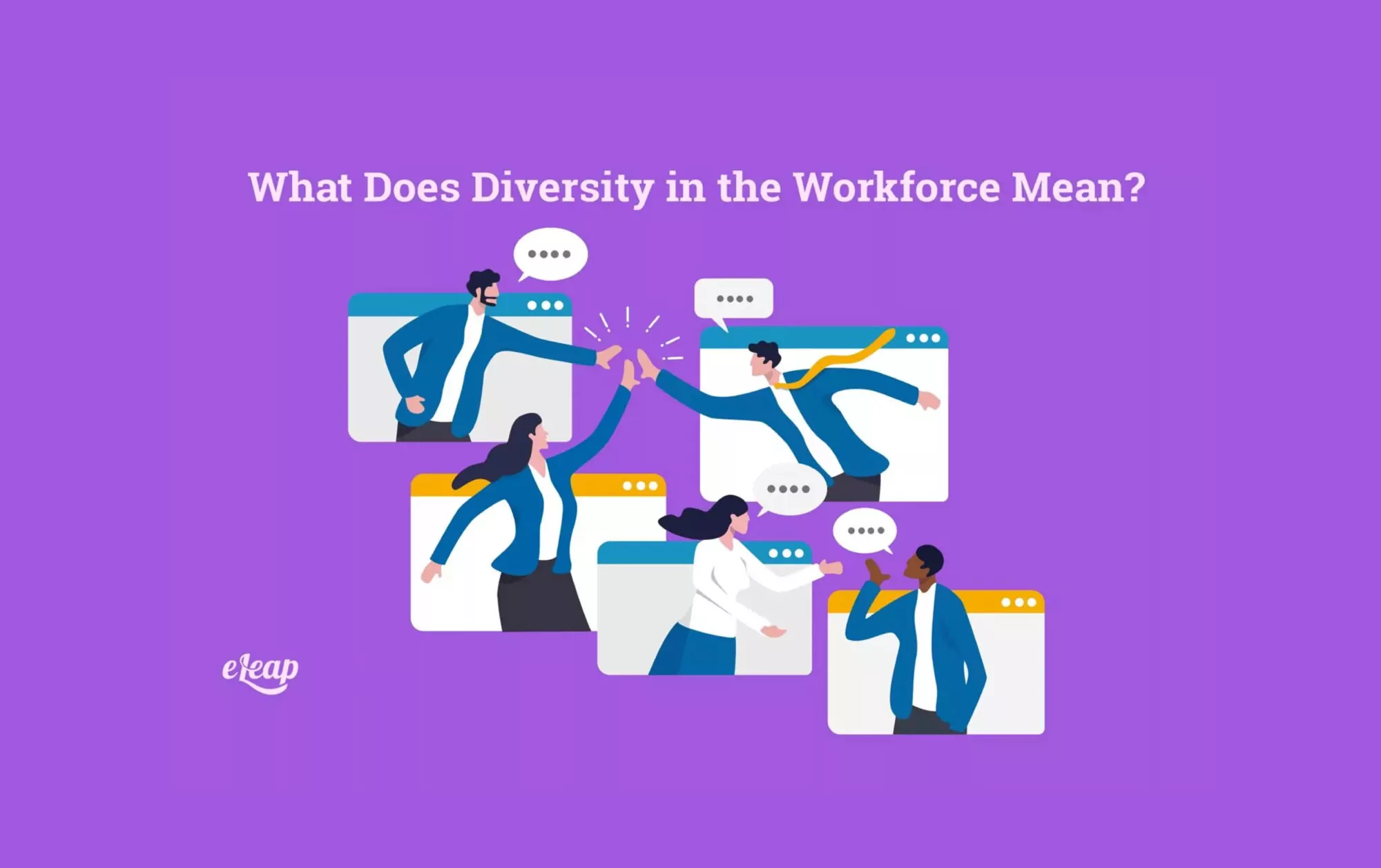What Does Diversity in the Workforce Mean?

Have you considered what diversity in the workforce means? Current HR buzzwords are diversity, equity, and inclusion. DEI initiatives are a priority for many employers. DEI initiatives are a smart business move in addition to simply being the right thing to do.
Companies spend time and other resources to ensure they have successful teams. Like any other initiative, creating a diverse workforce means benefits and challenges. Let’s look at the benefits, the challenges, and how to implement the initiatives in your own workforce.
Learning What Diversity in the Workforce Means
Creating a diverse workforce means hiring with intentionality. Your workforce needs to have a varied makeup. Your team should have various genders, races, religions, ages, ethnicities, and other characteristics.
Diversity in the workforce means multiple benefits from more than one perspective. You will note benefits both internally and externally. The benefits don’t equate to no challenges. A diverse workforce means the challenges are unique to the makeup of individuals on your team.
What Diversity in the Workforce Means in Terms of Benefits
Diverse Workforces Mean New Perspectives
Imagine walking into a building, and everyone looks alike. Now imagine walking into a building and seeing a workforce that includes different age groups, races, ethnicities, and genders. Where would you rather work?
Choosing to include individuals with different backgrounds in your workforce means that those people will bring different ideas and points of view into the workplace. Imagine the perspectives your team could share when they all come from different backgrounds.
Thinking of bringing diversity into the workforce can mean stress for a hiring manager. They may focus on the potential for awkward moments in the workplace rather than realizing the potential for improvement in areas of problem-solving and decision-making. A diverse population in the workforce can mean up to 60% improvement in decision-making because of the different perspectives.
A Diverse Workforce Means A Wider Talent Pool
Employees look for different things in a job than they once did. Now, working for a company that accepts challenges and helps them grow is the goal of many workers. Companies that have a diverse workforce attract a greater number of talented candidates.
Millennials and GenZers are the most diverse generations historically. Only just over half of the millennials in the US are white compared to approximately three-fourths of the baby boomers. Job seekers are looking for diversity when they choose to entertain a job offer. The result is that diverse businesses attract better talent.
Companies that actively seek a diverse workforce have more choices than those that don’t. Certainly, it’s essential to be selective when you choose your workforce. However, ensure you are focusing on the correct traits rather than being picky about things that don’t matter. The key to finding excellent candidates is to embrace a diverse workforce.
Embracing Diversity in the Workforce Can Mean More Innovation

A diverse workforce can mean increased innovation. Think about it. If everyone in your workforce has the same background and experiences, they will likely approach solving problems similarly. However, when you have a group with varying backgrounds and experiences, they will have unique ideas and perspectives that can lead to innovative strategies.
If you think about how a change of pace for your workforce can mean fresh ideas, it makes sense that a change in your workforce’s dynamics can also mean new ideas. Each individual brings with them their background, culture, and ideas. When those ideas combine, creativity and innovation follow.
Diversity in the Workforce Can Mean Better Employee Performance
Diversity in the workforce can mean employees feel more comfortable expressing themselves. The ability to feel confident in the workplace makes your employees happier. Happier employees are more productive employees.
Everyone is pressured to conform to the norm when your workplace is filled with people from the same or similar backgrounds. Pressure to conform can cause employees to not perform their best at work due to fear of their ideas being rejected.
Diversity in the Workforce Can Mean Increased Profits
Adding diversity to your workforce can mean that the employees perform better, which can lead to higher profits for the company. Studies of public companies have shown that those companies with diversity in their management teams have greater financial returns. It is worth considering if something as simple as increasing diversity can lead to improved finances.
Diversity in the Workforce Can Mean Challenges
Diversity Implementation in the Workforce Can Mean Challenges with Organizational Goals
Implementing diversity in the workforce means committing to the practices. Your organizational goals are unique, so your diversity goals must fit with those goals. No other company will have the same goals as yours, so there is no handbook for incorporating your diversity goals into your organizational structure.
You don’t have to follow the model of other companies when incorporating diversity. If you already have a racially diverse workforce, you may need to focus on gender diversity or vice versa. You don’t have to focus on the same areas of diversity as your neighboring companies.
The solution to this issue is to conduct a survey focused on diversity. The survey will help you identify the gaps in your diversity plan. Knowing where the gaps are lets you know where to focus the resources you allot to diversity implementation. This will help you determine where to spend your time.
Incorporating Diversity in the Workforce Can Mean Difficulty Implementing Your Design
Designing your workforce diversity plan is the easy part. You can create a detail-oriented program, but if no one on staff carries out the plan, it’s pointless to create it. You must have the resources and team to move from designing the plan to implementing it. Ensure that your leadership and your entire team are on board with implementing your diversity plan.
The solution here is finding a resource that helps you create your plan and then holds your company accountable for the way the plan is implemented. Beyond resources, creative solutions may be the way to go.
Incorporating Diversity in the Workforce Means Training Management
Everyone in the company must cooperate for diversity implementation in the workforce to be a successful proposition. Management plays a crucial role in carrying out your diversity initiatives. Management training can give them a better understanding of your diversity goals, why you have them, and what you expect from them when dealing with employees. This is definitely an area where one bad apple spoils the bunch.
The solution to this issue is to implement diversity training for everyone in the company. You mainly want to ensure that your leadership team participates in diversity training. There are companies that can help you use relationship building and other tools to help you build custom diversity training programs.
Diversity in the Workforce Means Overcoming Bias
Humans are naturally biased against those that are different. Many of the decisions we make come from our biases rather than from the facts of the situation. So, it’s essential to be aware of the biases you bring to the workplace and help to ensure that you don’t allow anyone’s biases to infiltrate their daily interactions.
The solution for the bias issue is to invest in training that is specifically designed to help your workforce overcome bias. Inevitably, there will be some bias. The workforce is human, after all. Being aware of common biases helps you to avoid those.
Incorporating Diversity in the Workforce Means Dealing with Internal Resistance
You may find that not everyone in your workforce is on the same page regarding creating a more diverse workforce. That means you will face resistance from within your company. Some of these people are just uncomfortable with things that aren’t familiar. Eventually, those people will adjust.
Other people may actively oppose intentionally building a more diverse workforce. The reason for the resistance isn’t important. The important thing is that you take the initiative to educate your workforce about why you are attempting to implement diversity.
The solution to internal resistance involves helping people understand why diversity and inclusion are essential to the team. If you aren’t clear about how your cultural diversity efforts apply to your workplace culture, you may lose some of your employees because they don’t think your business is the right fit for them any longer.
Wrapping It Up
Diversity in the workforce can mean benefits and challenges for your company. Implementing a diversity program is not a simple process, but companies with a more diverse workforce find their employees more productive. Added productivity can lead to increased profits.
Many challenges to diversity implementation can be reduced, if not solved, by implementing diversity training with your workforce and your leadership team. Having a clear plan for diversity implementations in the workforce can mean reduced issues as you can only communicate a plan if you are clear about what the plan is.